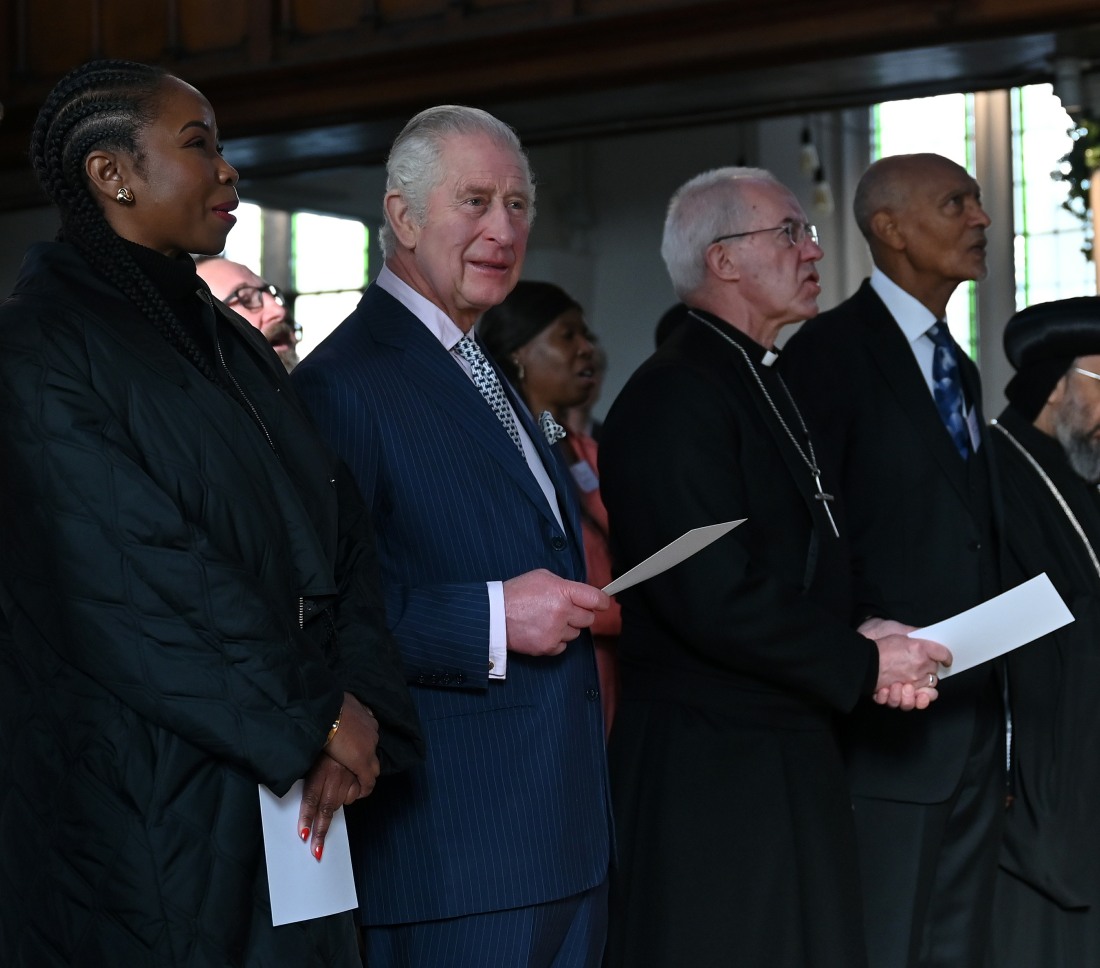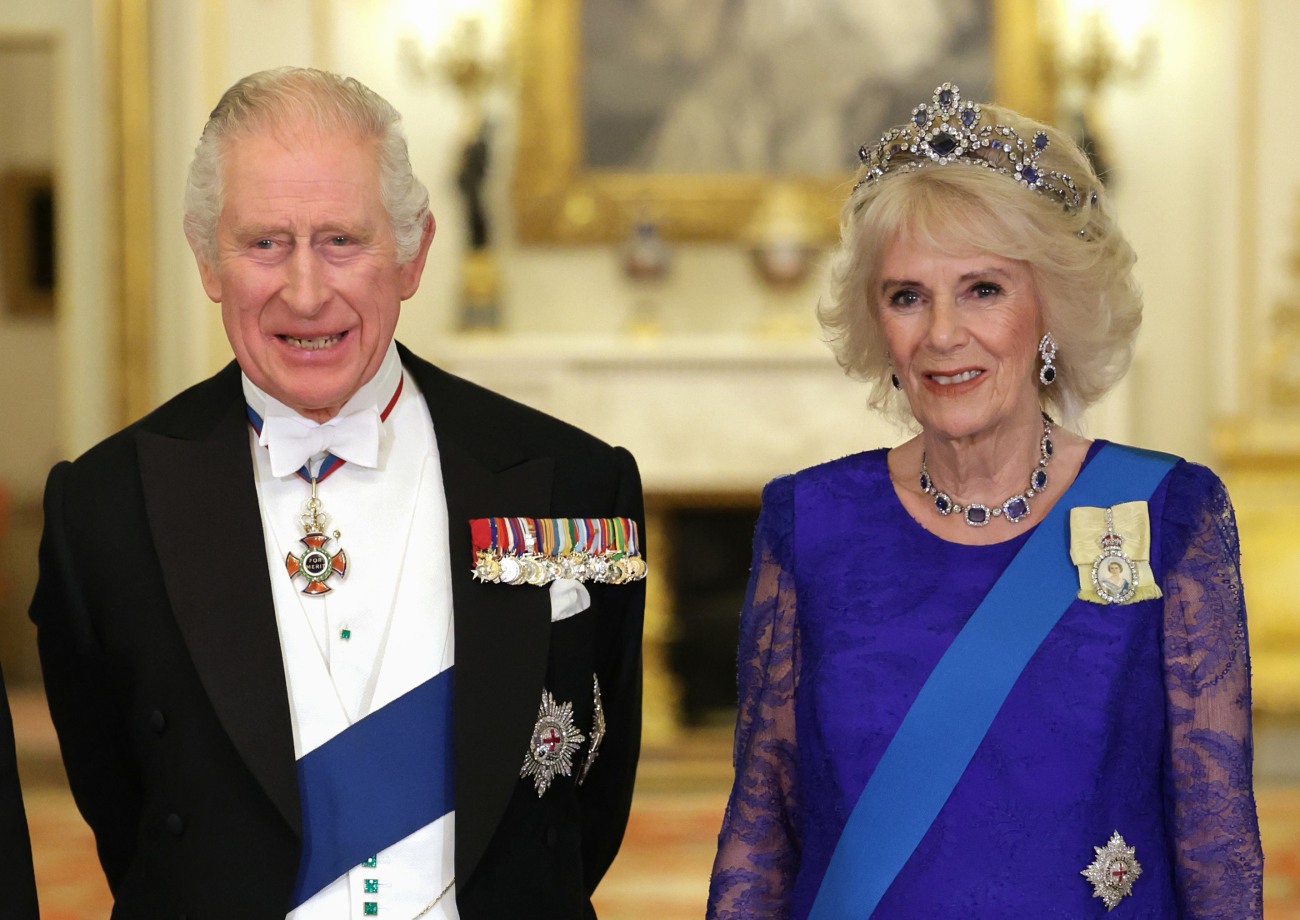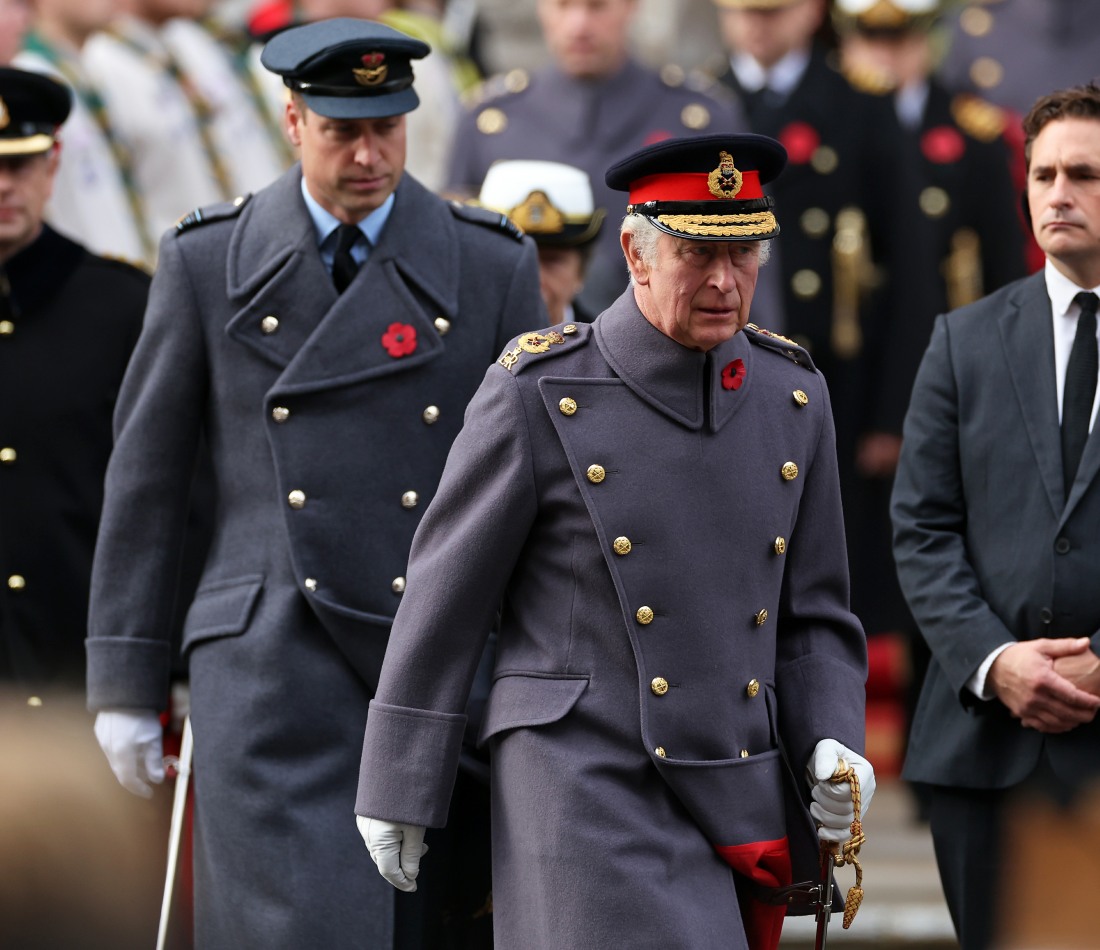
This week, the Windsors’ historical connections to and profits from the transatlantic slave trade have been in the news like never before. An American historian named Dr. Brooke Newman uncovered documentation from the 17th century which has provided a direct link between slave trader Edward Colson and King William III. These links were already well known and there are (obviously) all kinds of historical records about the British monarchy’s substantial connections to and profits from slavery, but this document is being discussed like it’s brand new information. From the Guardian’s exclusive:
An imposing bronze statue stands tall on the manicured lawns at Kensington Palace, a formidable tribute to William III, who built the palace as a royal residence in the bustling heart of London. William’s namesake, the current Prince of Wales, grew up there with his mother, Diana, Princess of Wales, and today it is his official London residence with his wife, Catherine.
Awareness has grown in recent years of William III’s personal investment in the transatlantic slave trade at the time he built Kensington Palace, and of successive English monarchs’ involvement in the industrial-scale enslavement and exploitation of Black people. King Charles III and Prince William have made public statements recently expressing “profound sorrow” at the “appalling atrocity of slavery”, which they said “forever stains our history”. However, neither has explicitly acknowledged the full extent of the monarchy’s role.
At Kensington Palace, in the stories of kings and queens told on the information boards on the public tour, and outside on the William III statue, there is not a word about their links to slavery.
But now a document found in the archives by the historian Dr Brooke Newman, and published for the first time by the Guardian, highlights the involvement of the British monarchy in the appalling trade. The publication of the document has added impetus to calls for the royal family to thoroughly investigate their historical links to transatlantic slavery.
Four lines of elaborately ink-written scrawl state that £1,000 of shares were given to William III in 1689. The shares were in the Royal African Company (RAC), which captured, enslaved and transported thousands of African people, with the monopoly power of a royal charter. The document clearly bears the handwritten name of the now notorious Edward Colston.
Once revered as a philanthropist in his home city of Bristol, Colston has since been exposed by modern campaigners for his slave-trading business, and protesters toppled his statue in June 2020. After Colston transferred the RAC shares, King William III became governor of the company and earned further wealth from it. The royal charter gave the RAC a forcibly protected monopoly to trade in enslaved people from west Africa.
The Slave Voyages database, which collects information from historical research, states that in the 60 years of its operations, the RAC transported 186,827 enslaved people, including almost 24,000 children, to the Americas. More than 38,000 people died during the journeys.
Newman, who is writing a book, The Queen’s Silence, on the British monarchy’s historic involvement in slavery and modern failure to acknowledge it, found the Colston transfer in the National Archives in Kew on a research trip to London in January. She was commissioned as a consultant on the monarchy’s links to slavery by the Guardian’s Cotton Capital project, which has investigated the newspaper’s links to slavery.
[From The Guardian]
Soon after the Guardian revealed this documentation, Buckingham Palace rushed to respond – apparently, under King Charles, the palace is “aiding” a project cosponsored by the Historic Royal Palaces to examine “the historical ties that bind the monarchy and slavery.” Which I believe is a completely separate project from the Guardian’s Cotton Capital project? While the palace didn’t want to speak on the record about this specific documentation between King William III or Edward Colson, the palace said that:
“This is an issue that His Majesty takes profoundly seriously. As His Majesty told the Commonwealth heads of government reception in Rwanda last year: ‘I cannot describe the depths of my personal sorrow at the suffering of so many, as I continue to deepen my own understanding of slavery’s enduring impact,’ ” a palace spokesperson told The Guardian.
“That process has continued with vigour and determination since His Majesty’s accession. Historic Royal Palaces is a partner in an independent research project, which began in October last year, that is exploring, among other issues, the links between the British monarchy and the transatlantic slave trade during the late 17th and 18th centuries,” they continued. “As part of that drive, the royal household is supporting this research through access to the royal collection and the royal archives.”
[From People]
Here’s where it gets very tricky – notice the careful wording here: “the royal household is supporting this research through access to the royal collection and the royal archives.” The monarchy is famous for refusing academic access to the Windsor archives, the vast records they have of their institutional business dealings, correspondence and decision-making. What *kind* of access is King Charles giving to researchers and academics? I bet the answer is not “unfettered.” But sure, everyone’s giving Charles a cookie because he acknowledged that (gasp) there’s are links between the British monarchy and the slave trade. The bar is in hell – of course he acknowledges the links, because there’s evidence everywhere, in the royal archives, in the archives of governments around the world, in academic archives and on and on.
Photos courtesy of Avalon Red.
Source: Read Full Article


